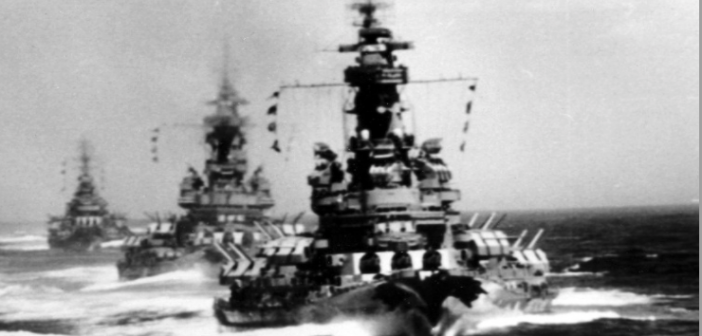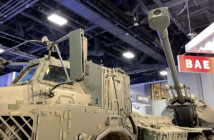By Harlan Ullman
It is human nature for people to live in the present and thus forget or pay less attention to the past. For example, many think today is the most complex and complicated period in our history with Covid; Great Power Competition with two peer or near peer rivals; and many simultaneous crises whether in the Middle East or vis a vis Iran, North Korea, Syria and other irritants. And for the military services, especially the Navy that maintains an exhausting deployment schedule, dealing with the here and now of immediate personnel, equipment, readiness and operational issues is time consuming.
But history, like the Rules of the Road, should not be ignored. Below are eight questions, each purposely designed as a link between the past and present and a reminder that today might not be the most testing of times. The first year of the Pacific war, 1942, is instructive in part since World War II was the last major conflict that had a decisive naval component.
Before World War II, the American military was not even a shadow of what it would be three years later, when we defeated two peer competitors known as enemies then or what it is today. Ten million service personnel were trained, manned and equipped with literally many tens of millions of weapons. The Navy surged to 6000 ships and nearly 100 aircraft carriers, a feat impossible to repeat today given the expense and long lead times of building and manning modern weapons of war—a reminder of how difficult it will be to replace combat losses in a major 21st century conflict.
So please test your historical naval memory that might give pause as to how you regard today and the missions for which you are preparing:
First, if you were in the Navy and ordered to a destroyer in early 1942, where would you find CIC?
Second, at the Battle of Midway, June 4-5, 1942, USS Hornet’s Torpedo Squadron 8 was wiped out with one survivor. VT-8 flew the Devastator. What was its top speed when carrying its single torpedo?
Three, during the Battle for Guadalcanal from August 1942 to February 1943, how many U.S. Marines and how many sailors were killed in action?
Four, by the end of 1942, how many U.S. aircraft carriers were sunk in the Pacific and what percentage of the carrier force did those losses represent?
Five, how many ships and ground forces were detailed to Operation Causeway, the plan to capture Formosa from the Japanese in 1944, even though the operation was cancelled in order to invade the Philippines?
Six, at the end of World War II, who was the first admiral to serve more than one term as CNO and, of the twenty-four CNO’s confirmed after World War II, how many were fired, relieved early or died in office? How does that compare with the other services?
Seven, what single word marks that former CNO’s gravestone?
Eight, the current strategy calls for the military to compete, deter and if war comes defeat a range of potential adversaries topped by China and Russia. What was the “2 1/2 War strategy” of the past and what was it meant to achieve?
The answer to the first question is that CIC’s did not exist until 1943. CIC was largely developed by two future science fiction writers, Issac Asimov and Robert Heinlein. Heinlein, a 1934 Naval Academy who was retired as a lieutenant after nine years of service due to contracting tuberculosis. Of course today’s CIC’s are light years improved. But are they sufficient to deal with the most modern cyber, drone and hypersonic threats?
The answer to the second is 150 mile per hour on a good day, making the poor Devastator a flying coffin. Given advanced weaponry, are any of our legacy systems modern day Devastators?
In the Battle for Guadalcanal, about 1600 marines and 5500 sailors were killed in action. The Japanese lost about 20,000, most dying of starvation or disease. The point is that naval sea battles of ship versus ship cumulatively can be very costly.
By the end of 1942, 2/3 of the Pacific Fleet carrier force was sunk: Lexington, Yorktown, Wasp and Hornet. USS Enterprise was nearly sunk twice. Only USS Saratoga, transferred from the Atlantic, was relatively unscathed. Four of six were lost. Eighty years later, comparisons may not apply. However, this loss rate is a reminder of the expensive and lethal nature of war.
Many worry about a Chinese military takeover of Taiwan. But to storm Formosa, 4000 ships and 400,000 soldiers and marines were assigned to that invasion, about double the size of the initial Normandy landing.
Arleigh Burke is the answer but the longevity of CNO’s is a more complicated matter. Nine of twenty-four confirmed CNO’s did not last more than one term, were relieved or otherwise left office early—more than one in five. In the corporate world, that would be devastating for any company. Fleet Admiral Chester Nimitz replaced FADM Ernest King after World War II. But Secretary of the Navy James Forrestal did not trust Nimitz. Nimitz was given one two year term and told by Forrestal to stay silent.
Admiral Louis Denfeld followed Nimitz and got caught in the firestorm of the so-called Revolt of the Admirals over cancelling the supercarrier USS United States and sustaining the B-36 bomber. Denfeld was replaced by Forrest Sherman, then the youngest CNO in history, who died of overwork after just two years. William Fechteler was given the choice of retirement or reassignment and went to Europe as the naval commander. Admiral Robert Carney was not extended.
The war time hero and part architect of the Revolt of the Admirals, Arleigh Burke, a two star, was promoted by President Eisenhower in 1955 to replace Carney and served for six years, the first CNO to last more than one term in a decade.
But other CNO’s had rough going. In 1964, CNO George Anderson was forced to stand down and accept an appointment as ambassador to Portugal after running afoul of Secretary of Defense Robert McNamara during the October 1962 Cuban Missile Crisis.
At the end of his tour, Admiral Elmo “Bud” Zumwalt had so outraged President Richard Nixon with his harsh criticism of the strategic arms and Anti-Ballistic Missile Treaties with the Soviet Union, that Nixon ordered Secretary of Defense James Schlesinger to fire the CNO with only a few days left in his second term. Schlesinger, knowing Nixon was mortally wounded over Watergate, had anticipated the crisis and had invited Vice President Gerald Ford to be Zumwalt’s retirement speaker. Zumwalt had his ceremony and was awarded the Distinguished Service Medal.
In 1996, the first enlisted man to become CNO, Admiral Jeremy “Mike” Boorda, committed suicide. And in 2019, after having been confirmed as CNO, the very able Admiral Bill Moran chose to retire. The other services have not had the same degree of turmoil. Army Chief of Staff, General Creighton Abrams died of cancer in 1974 while in office.
Two Air Force chiefs were fired: General Michael Dugan in 1990 for talking to the press about plans for Desert Storm and Gen. Mike Moseley in 2001 for the Air Force’s mishandling of nuclear weapons. A third chief, General Ronald Fogleman resigned over differences with the Clinton administration in 1997. The Marines had no problems. A management consultant might ask what were the reasons why the Navy had unique issues with its senior leaders.
In today’s jargon where “warrior” and “war fighter” have great virtue, Burke’s tombstone has a one word epitaph “Sailor.”
The eighth question about the 2 1/2 war strategy took form during the Kennedy administration. The strategy required the U.S. to be prepared to fight and win concurrent wars with Red China and the Soviet Union AND a wage “half war” elsewhere. Clearly unaffordable and unexecutable, the U.S was unable to win the “half war” in Vietnam.
Today, when the National Defense Strategy directs the Pentagon “to compete, deter and, if war comes, defeat” a range of competitors topped by China and Russia, one wonders if the flaws in the 2 1/2 war strategy are being repeated.
Obviously, thousands of other questions and answers could have made similar points to generate and provoke more questions about how, where and why history should not be forgotten no matter how rigorous current demands may be.
2100 EDT 01 Jun 21
Dr Harlan Ullman is UPI’s Arnaud deBorchgrave Distinguished Columnist. His next book due out in 2021 is The Fifth Horseman and the New MAD: How Massive Attacks of Disruption Became the Looming Existential Danger to a Divided Nation and the World at Large.



